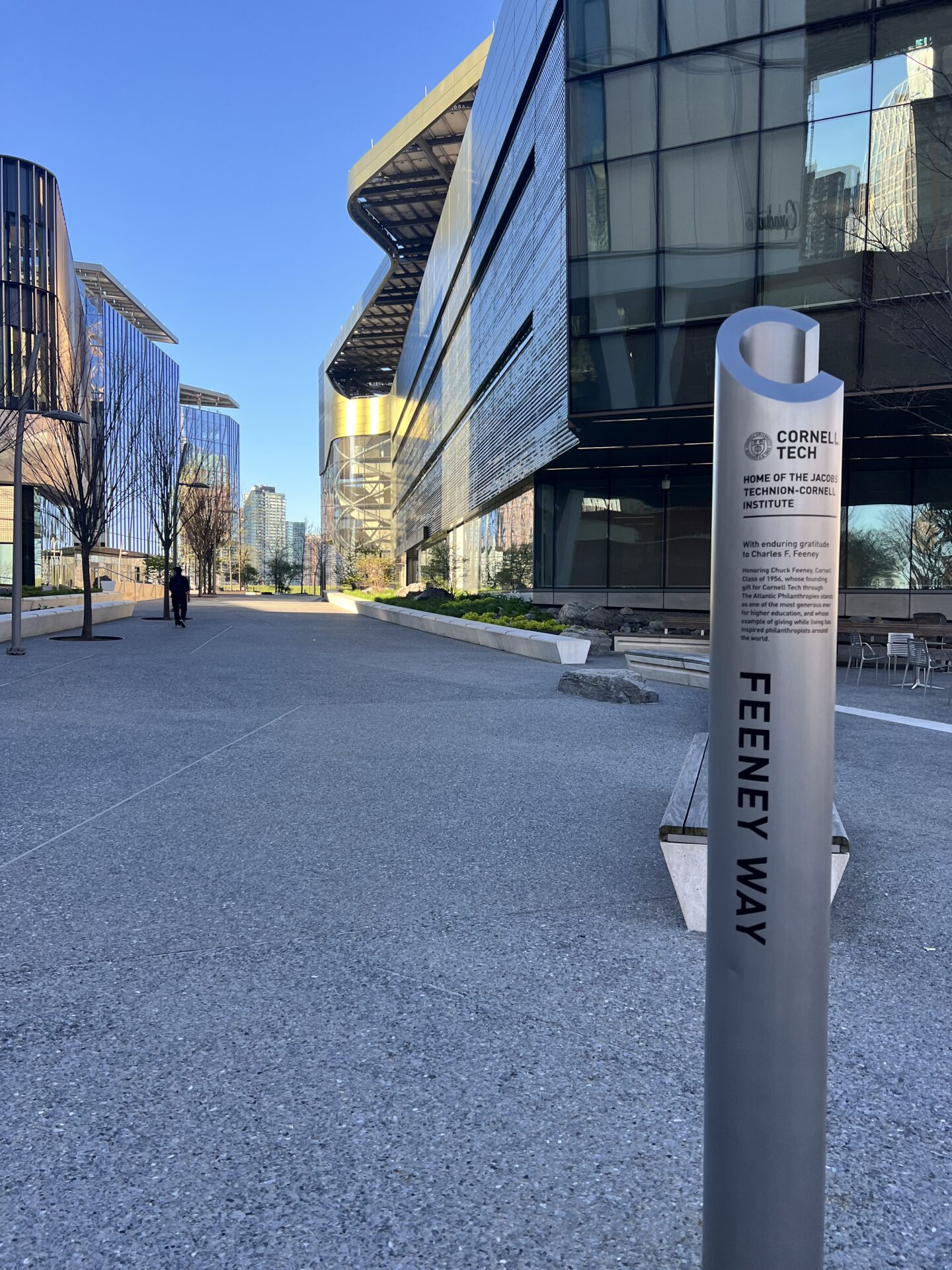‘Ghostdrivers’ Test Cultural Reactions to Autonomous Cars
Categories

A “ghostdriver” car seat costume, developed to better assess pedestrians’ reactions to autonomous cars on the road.
In Mexico City, some pedestrians reacted playfully to apparently autonomous vehicles, walking in front of them or nudging friends toward them. In rural Colima, Mexico, around 450 miles away, pedestrians were more likely to wait for the cars to pass before crossing the street.
And in the Netherlands, some pedestrians were surprised to encounter driverless cars, believing the decision to introduce them should have been discussed at town hall meetings ahead of time.
In a series of studies conducted in three countries over more than five years, a Cornell Tech-led team has pioneered the use of “ghostdrivers” – cars with drivers disguised under a car seat-like hood, to make the car appear driverless – in order to assess and compare how pedestrians across cultures might actually behave when encountering these cars on the roads.
“Researchers were running experiments, but it was really hard to get naturalistic behavior because people knew they were coming to a special place to see a special car,” said Wendy Ju, assistant professor of information science at the Jacobs Technion-Cornell Institute at Cornell Tech.
“Our study was the first to pioneer having fake autonomous cars on the roads, and it’s really useful in eliciting the way people are going to interact with them,” she said. “This kind of research has to happen before autonomous systems are in place.”
Ju is senior author of “On-Road and Online Studies to Investigate Beliefs and Behaviors of Netherlands, U.S. and Mexico Pedestrians Encountering Hidden-Driver Vehicles,” which won an honorable mention at the 2020 Association for Computing Machinery/Institute of Electrical and Electronics Engineers International Conference on Human-Robot Interaction. (The conference was canceled because of the coronavirus pandemic but some talks were held online.)
The paper’s first author is Jamy Li of the University of Twente, Netherlands. The study was co-authored by David Goedicke, a Cornell Tech doctoral student; Hamish Tennent, formerly a researcher at Cornell Tech; Rebecca Currano, Aaron Levine and David Sirkin of Stanford University; and Vanessa Evers of the University of Twente.
After developing the ghostdriver technique, Ju’s team experimented with it in California’s Bay Area, but wanted to try different locations because autonomous cars are frequently tested in the Bay Area, and residents are relatively used to seeing them.
“Over the course of this research, we discovered that there are many different localized rules and norms for how people interact with autonomous cars and with each other,” she said.
For example, in a 2018 study, they found pedestrians in Mexico City were more likely to cross in front of a ghostdriven vehicle, while residents of Colima would wait for it to pass; and more Mexico City residents took a curved path across the street than Colima residents.
In the most recent study, the team found that pedestrians in Europe, like their North American counterparts, took longer to cross when the vehicle appeared to be autonomous. They also found that pedestrians in groups spent less time looking at normal cars than did single pedestrians, but more time looking at the ghostdriven cars than did single pedestrians.
The researchers also conducted experiments with people watching autonomous cars on video, both in the Netherlands and California. They found that in both locations, people were less likely to believe a car was autonomous when watching a video than when they encountered it in real life.
While testing the ghostdriven cars on the road, the researchers found pedestrians hardly looked at cars before crossing.
“Sometimes people wouldn’t remember that a car was at the intersection at all, because crossing is such an automatic behavior and people are preoccupied,” she said. Researchers also discovered people tended to look at the car’s front bumper and front wheel, seeking eye contact with the driver only if something seemed unusual.
“So what we think is the normal behavior,” Ju said, “is actually the breakdown behavior – what we do when things are uncertain.”
In interviews conducted after the encounter, pedestrians in the Netherlands expressed fear of the seemingly driverless car. “We were trying to run away from it … . It’s creepy,” one said; “We don’t know how advanced it is or how it works. … we’re afraid, because we don’t know,” another said.
Understanding cultural norms for pedestrians and drivers is important not only for safety but for successfully integrating autonomous vehicles into cities and towns, Ju said.
“If you don’t have any idea what people are going to do, there are going to be more incidents,” she said. “The other thing is that people have really strong opinions about these cultural norms. It’s not enough that the cars are not running people over; people have a feeling about whether cars behave in the right way or the wrong way, and they get really angry if the car doesn’t do the right thing.”
Very slow driving, for example, might be safer but it also might enrage the other drivers on the road. “People expect technology to adapt to the way they drive,” she said. “It’s really important that we teach these autonomous cars to learn the lingua franca of on-road interactions.”





